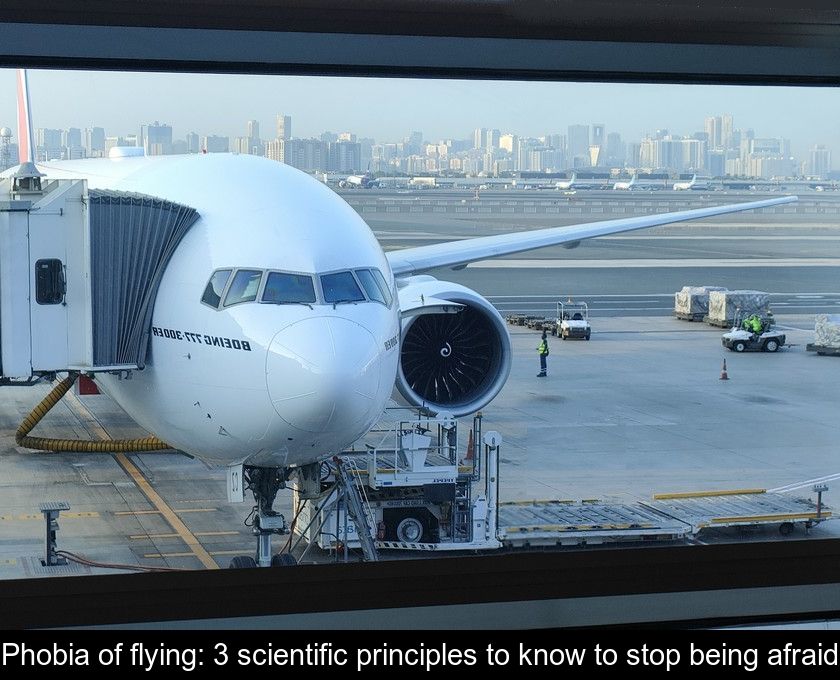Phobia Of Flying: 3 Scientific Principles To Know To Stop Being Afraid
If you panic at the thought of getting on an airplane, it's probably because you don't know the laws of physics that allow planes to fly. We suggest you discover three scientific principles that will help you overcome your fear of flying or at least limit your fear.
1- Newton's laws of motion
For all passengers who have a phobia of flying, takeoff is a particularly nerve-wracking moment. Indeed, when the pilot steps on the throttle, you feel the acceleration of the aircraft and you find yourself as if glued to the back of your seat.
According to Newton's laws of motion, this sensation, which may seem unpleasant to you, simply means that a force is being exerted on you: the plane is picking up speed and going from 0 to 250 km/h in about 30 seconds
This thrust is more impressive than in a sports car, for example, because it is very fast. In a car, the passage from 0 to 100 km/h or more is more progressive...
2- Lift
Speed alone would not allow planes to take off and fly if they did not have wings. The secret of airplane flight lies in the shape of their wings. They are domed on top and flat on the bottom to fly better.
Because of this shape, the air under the wing has a normal pressure while the air on the wing has a lower pressure. The air pressure is higher under the wings, which propels the plane upward.
In addition, the wings of airplanes are not perfectly horizontal but point slightly upward, which also pushes them upward as the plane moves forward.
The shape and surface area of the wings, combined with the speed of the plane, generate lift, the force that literally carries the plane through the air. In an airplane, the shape of the wing is actually called the airfoil or lift surface.
Lift is your best friend because it can be defined as the vertical force that counteracts the earth's gravity and lifts the plane off the ground. Knowing that the air is carrying you (much like sea water when you're wakeboarding) is a reassuring thought when you suffer from airplane phobia.
3- The Faraday cage
For all passengers and especially for those with a phobia of flying, perhaps the scariest experience on a flight is thunderstorms, turbulence and air holes.
Some people especially dread thunderstorms when they fly. If you are one of them, first of all, you should know that these days, the cruising altitude of airliners is above most thunderstorm clouds.
When large cumulonimbus clouds are at this altitude, pilots try to fly around them. You will only have to fly through storm clouds during the climb and descent phases if they cannot be avoided.
But rest assured: even if lightning strikes your plane, no one will be electrocuted on board! An airplane is a metal box that acts like a Faraday cage. Maybe you've heard that during a thunderstorm it's safer to stay inside your car... What's true for cars is also true for planes.
If you're thinking that lightning doesn't mix well with flight instruments, you should know that all airplanes are equipped with lightning protection devices that act like lightning rods and protect the aircraft from the damage a lightning bolt could cause to the aircraft's electrical systems.
Less impressive, but still a bit scary, is the turbulence that makes you feel like you're being tossed around like on a rough sea or a bumpy road in a car. Sometimes, the plane seems to dive but this 'falling' sensation is only an air gap.
These jolts that disrupt the serenity of your trip are simply due to weather conditions and air movements around the aircraft that act a bit like waves on a boat. Turbulence can indeed be related to a change in air temperature or wind shear (when two air currents are not going in the same direction).
But, in any case, it never brings down modern airliners. The main risk from turbulence is hitting your head if you haven't fastened your seatbelt, or being knocked out by a piece of luggage if the compartment above the seat isn't closed properly. Just remember to check these two points and you can travel with peace of mind.








